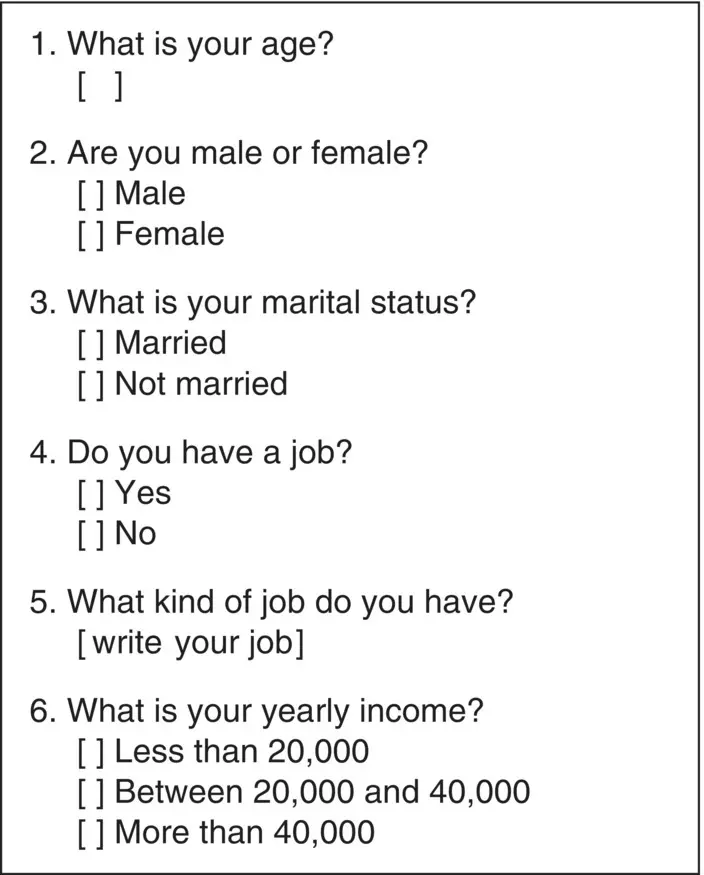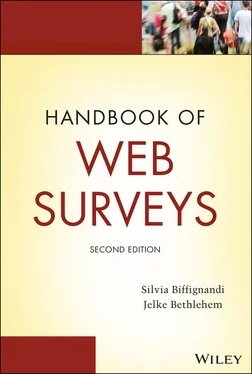1 ...8 9 10 12 13 14 ...35
1.2.4 THE CONQUEST OF THE WEB
The development of the Internet started in the early 1970s. The first step was to create networks of computers. The U.S. Department of Defense decided to connect computers of research institutes. Computers were expensive. A network made it possible for these institutes to share each other's computer resources. The name of this first network was ARPANET.
ARPANET became a public network in 1972. Software to send messages over the network was developed. Thus, e‐mail was born. Ray Tomlinson of ARPANET was sending the first e‐mail in 1971.
The Internet was fairly chaotic in the first decade of its existence. There were many competing techniques and protocols. In 1982, the TCP/IP set of protocols was adopted as the standard for communication of connected networks. This can be seen as the real start of the Internet.
Tim Berners‐Lee and scientists at CERN, the European Organization for Nuclear Research in Geneva, were interested in making it easier to retrieve research documentation over the Internet. This led in 1989 to the hypertext concept, a text containing references (hyperlinks) to other texts the reader can immediately access. To be able to view these text pages and navigate to other pages through the hyperlinks, Berners‐Lee developed a computer software. He called this program a browser . The name of the first browser was World Wide Web . Now this name denotes the whole set of linked hypertext documents on the Internet.
In 1993, Marc Andreessen and his team at the National Center for Supercomputing Applications (NCSA) (Illinois, USA) developed the browser Mosaic X . It was easy to install and use. This browser had increased graphic capabilities. It already contained many features that are common in current browsers. It became a popular browser, which helped to spread the use of the World Wide Web across the world.
The rapid development of the Internet led to new modes of data collection. Already in the 1980s, prior to the widespread introduction of the World Wide Web, e‐mail was explored as a new mode of survey data collection. Kiesler and Sproul (1986) describe an early experiment conducted in 1983. They compared an e‐mail survey with a traditional mail survey. They showed that the costs of an e‐mail survey were much less than those of a mail survey. The response rate of the e‐mail survey was 67%, and this was somewhat smaller than the response rate of the mail survey (75%). The turnaround time of the e‐mail survey was much shorter. There were less socially desirable answers and less incomplete answers. Kiesler and Sproul (1986) noted that limited Internet coverage restricted wide‐scale use of e‐mail surveys. In their view, this type of data collection was only useful for communities and organizations with access to and familiarity with computers. These were relatively well‐educated, urban, white‐collar, and technologically sophisticated people.
Schaefer and Dillman (1998) also compared e‐mail surveys with mail surveys. They applied knowledge about mail surveys to e‐mail surveys and developed an e‐mail survey methodology. They also proposed mixed‐mode surveys for populations with limited Internet coverage. They pointed out some advantages of e‐mail surveys. In the first place, e‐mail surveys could be conducted very fast, even faster than telephone surveys. This was particularly the case for large surveys, where the number of available telephones and interviewers may limit the number of cases that can be completed each day. In the second place, e‐mail surveys were inexpensive, because there were no mailing, printing, and interviewer’s costs.
The experiment of Schaefer and Dillman (1998) showed that response rates of e‐mail and mail surveys were comparable, but the completed questionnaires of the e‐mail survey were received much quicker. The answers to open questions were, on average, longer for e‐mail surveys. This did not come as a surprise because of the relative ease of typing an answer on a computer compared to writing an answer on paper. There was lower item nonresponse for the e‐mail survey. A possible explanation was that moving to a different question in an e‐mail survey is much more difficult than moving to a different question on a paper form.
Couper, Blair, and Triplett (1999) found lower response rates for e‐mail surveys in an experiment with a survey among employees of statistical agencies in the United States. They pointed out that nonresponse can partly be explained by delivery problems of the e‐mails and not by refusal to participate in the survey. For example, if people do not check their e‐mail or if the e‐mail with the questionnaire does not pass a spam filter, people will not be aware of the invitation to participate in a survey.
Most e‐mail surveys could not be seen as a form of CAI. It was merely the electronic analogue of a paper form. There was no automatic routing and no error checking. See Figure 1.1for a simple example of an e‐mail survey questionnaire. It is sent to the respondents. They are asked to reply to the original message. Then they answer the questions in the questionnaire in the reply message. For closed questions they do that by typing an X between the brackets of the option of their choice. The answer to an open question is typed between the corresponding brackets. After completion, they send the e‐mail message to the survey agency.

Figure 1.1 Example of an e‐mail survey questionnaire
Use of e‐mail imposes substantial restrictions on the layout. Example 1.3describes a first way adopted to approach businesses for a web survey. Due to e‐mail software of the respondent and the settings of the software, the questionnaire may look different to different respondents. For example, to avoid problems caused by line wrapping, Schaefer and Dillman (1998) advise a line length of at most 70 characters. Schaefer and Dillman (1998) also noted another potential problem of e‐mail surveys: the lack of anonymity of e‐mail. If respondents reply to the e‐mail with the questionnaire, it is difficult to remove all identifying information. Some companies have the possibility to monitor the e‐mails of their employees. If this is the case, it may become difficult to obtain high response rates and true answers to the questions asked.
Personalization may help to increase response rates in mail surveys. Therefore, this principle should also be applied to e‐mail surveys. An e‐mail to a long list of addresses does not help to create the impression of personal treatment. It is probably better to send a separate e‐mail to each selected person individually.
EXAMPLE 1.3The first e‐mail survey at Statistics Netherlands
The first test with an e‐mail survey at Statistics Netherlands was carried out in 1998. At the time, Internet browsers and HTML were not sufficiently developed and used to make a web survey feasible.
Objective of the test was to explore to what extent e‐mail could be used to collect data for the survey on short‐term indicators. This was a non‐compulsory panel survey, where companies answered a small number of questions about production expectations, order‐books, and stocks.
The traditionally mode of data collection for this survey was a mail survey.
The test was conducted in one of the waves of the survey. 1,600 companies were asked to participate in the test. If they did, they had to provide their e‐mail address. About 190 companies agreed to participate. These were mainly larger companies with a well‐developed computer infrastructure.
Читать дальше













